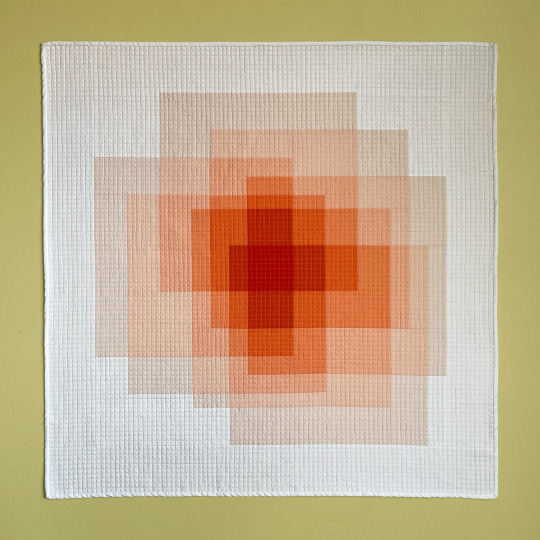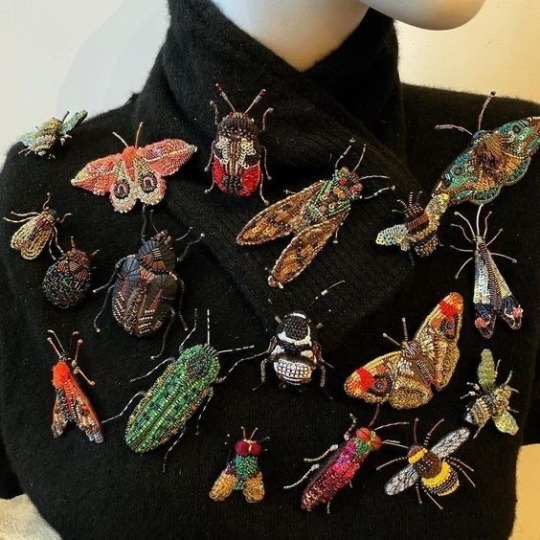Crochetter! Focus on cute, funky, fun colors and designs. 😎 Lover of graffiti. https://linktr.ee/HalicoArt
Don't wanna be here? Send us removal request.
Text

I SHALL NOT WANT , by me, 2025. i don’t usually do textile work but i have been lately i guess
10K notes
·
View notes
Text

It’s All For U (If U Rlly Want It)
woven jacquard, glass seed beads and machine embroidery
59 x 85 1/2 in
2024

Waiting to Exhale
woven jacquard and glass seed beads
2022
Qualeasha Wood
13K notes
·
View notes
Text




September 17th, 2024 - 9'3" x 8 25", acrylic
Original photo taken in Center City Philadelphia
See more of my crochet on here @halicocrochet or at halicoart on instagram
#crochetblr#crochet#yarnblr#fiber crafts#fiber art#tapestry#tapestry crochet#graffiti#graffiti art#graff#graffittiart#graffart
14 notes
·
View notes
Text




Old piece but I needed new pics. For some reason I made a .5" HST quilt out of T-shirts
100 notes
·
View notes
Text



she’s done!! a lot shorter than my last but it did serve as a preparatory work for my final which i’m super super excited to start working on!!!
9 notes
·
View notes
Text




A Kris amigurumi! Their design demanded more sewing than I expected, but I think it was worth it!
37 notes
·
View notes
Text

Pattern can be found here
Little WIP for my step mom's birthday! Still need to add the border and mount it.
#crochetblr#crochet#yarnblr#fiber crafts#fiber art#tapestry crochet#tapestry#wip#my wip#miffy#miffy the rabbit#i love miffy#rabbit#bunny#bnnuy#bnnuyposting
6 notes
·
View notes
Text





Afshar Sofreh textiles from South East and Central Persia.
Circa early 1900s
3K notes
·
View notes
Text


17th Century Knitted Bag (Spain), The Smithsonian Institute
Knitted with red and white silk, this bag features a drawstring top and motifs including ships, figures, and birds.
71 notes
·
View notes
Text

The Jumper Chair (England, 2022), created by Freddie Robbins and Carl Clerkin
Part of the Beasley Brothers Repair Shop installation in the Eternally Yours – Care, Repair and Healing exhibition at Somerset House, London.
13 notes
·
View notes
Text

Made a little patch for my cross body bag :)) pattern can be found here (cianaknits the Foosh pattern)
halicoart
#crochetblr#crochet#yarnblr#fiber crafts#fiber art#fish#artists on tumblr#yarn art#textile art#artwork#art#tapestry crochet#free crochet pattern#free pattern#free knitting pattern
126 notes
·
View notes
Text

Square Bloom
quilt by Jo Wollschlaeger
2nd place in American Patchwork & Quilting Transparency Quilting Challenge, QuiltCon 2025
this challenge focused on the illusion of transparency in quilting.
20K notes
·
View notes
Text

Tenderly Crocheted Sculptures by Caitlin McCormack Contend with Existential Dread
1K notes
·
View notes
Text



Some say it was a Warning…..
Crochet album cover no.6 🖤
I think this might be my favourite so far
98 notes
·
View notes
Text
500-year-old Snake Figure from Peru (Incan Empire), c. 1450-1532 CE: this fiber craft snake was made from cotton and camelid hair, and it has a total length of 86.4cm (about 34in)

This piece was crafted by shaping a cotton core into the basic form of a snake and then wrapping it in structural cords. Colorful threads were then used to create the surface pattern, producing a zig-zag design that covers most of the snake's body. Some of its facial features were also decorated with embroidery.

A double-braided rope is attached to the distal end of the snake's body, near the tip of its tail, and another rope is attached along the ventral side, where it forms a small loop just behind the snake's lower jaw. Similar features have been found in other serpentine figures from the same region/time period, suggesting that these objects may have been designed for a common purpose.

Very little is known about the original function and significance of these artifacts; they may have been created as decorative elements, costume elements, ceremonial props, toys, gifts, grave goods, or simply as pieces of artwork.
The Metropolitan Museum of Art argues that this figure might have been used as a prop during a particular Andean tradition:
In a ritual combat known as ayllar, snakes made of wool were used as projectiles. This effigy snake may have been worn around the neck—a powerful personal adornment of the paramount Inca and his allies—until it was needed as a weapon. The wearer would then grab the cord, swing the snake, and hurl it in the direction of the opponent. The heavy head would propel the figure forward. The simultaneous release of many would produce a scenario of “flying snakes” thrown at enemies.
The same custom is described in an account from a Spanish chronicler named Cristóbal de Albornoz, who referred to the tradition as "the game of the ayllus and the Amaru" ("El juego de los ayllus y el Amaru").
The image below depicts a very similar artifact from the same region/time period.

Why Indigenous Artifacts Should be Returned to Indigenous Communities.
Sources & More Info:
Metropolitan Museum of Art: Snake Ornament
Serpent Symbology: Representations of Snakes in Art
Journal de la Société des Américanistes: El Juego de los ayllus y el Amaru
Yale University Art Gallery: Votive Fiber Sculpture of an Anaconda
4K notes
·
View notes







